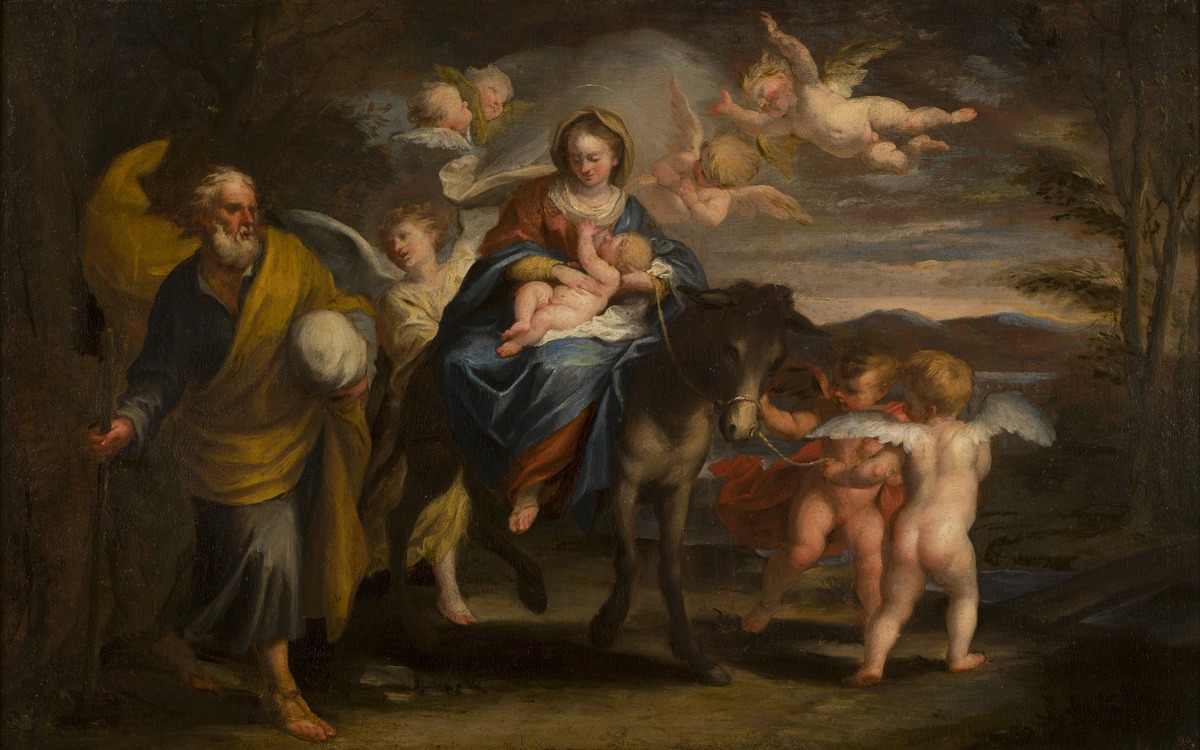
Giuseppe Badaracco, The Flight into Egypt, oil on canvas, 81.2 x 15.8 cm, 1650 circa. Weston Park Foundation, Shropshire. (Photo Credit: Weston Park Foundation).
Painted for a private Genoese patron, this small devotional canvas was recorded in the Lord Bradford collection before being donated in 1986 to the Weston Park Foundation through the National Heritage Memorial Fund. The scene illustrates Joseph’s escape into Egypt with his wife Mary and infant Christ. According to Matthew (2:13–14), an angel appeared to Joseph saying, “Arise, and take the young child and his mother, and flee into Egypt, and be thou there until I bring thee word: for Herod will seek the young child to destroy him”. In the history of art, there have historically been two main interpretations of the flight into Egypt: one, more dynamic, is the actual flight with the Madonna riding a donkey, while the other, the “rest” is entirely static. Badaracco has opted for the dynamic interpretation with Joseph on the left-hand side of the composition whose stride is somewhat undecided, as if led by the donkey who is already taken in hand by the putti. Next to him the Virgin rides side-saddle on the same kind of small donkey that brought her to Bethlehem when she was about to give birth. She holds the baby Jesus on her lap with his head tilted up. The rather Herculean putti seem to take the initiative, guiding the way by the donkey’s halter in the direction of a small bridge. Traversing a tranquil landscape, the Holy Family have just emerged from a sunken road running along a stream, and are about to climb a path that leads to a mountainside. The movement of the Virgin’s maphorion with Joseph’s billowing cape and the flurry of putti surrounding the Virgin imply a certain energy in the flight. Alongside these curving and circular airborne motifs, Badaracco creates strong contrasts with rich chiaroscuro in pools of light and dark on either side, culminating in a soft light surrounding the Virgin. This brightness is echoed in the illuminated bodies of the putti who drag the donkey in what one intuits as the twilight, after a tiring day of marching.